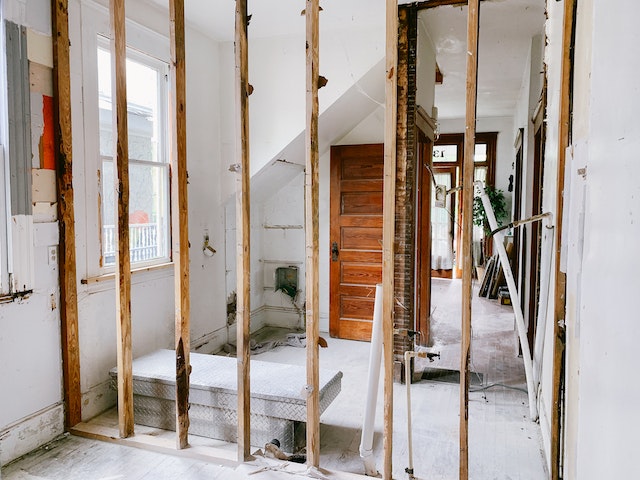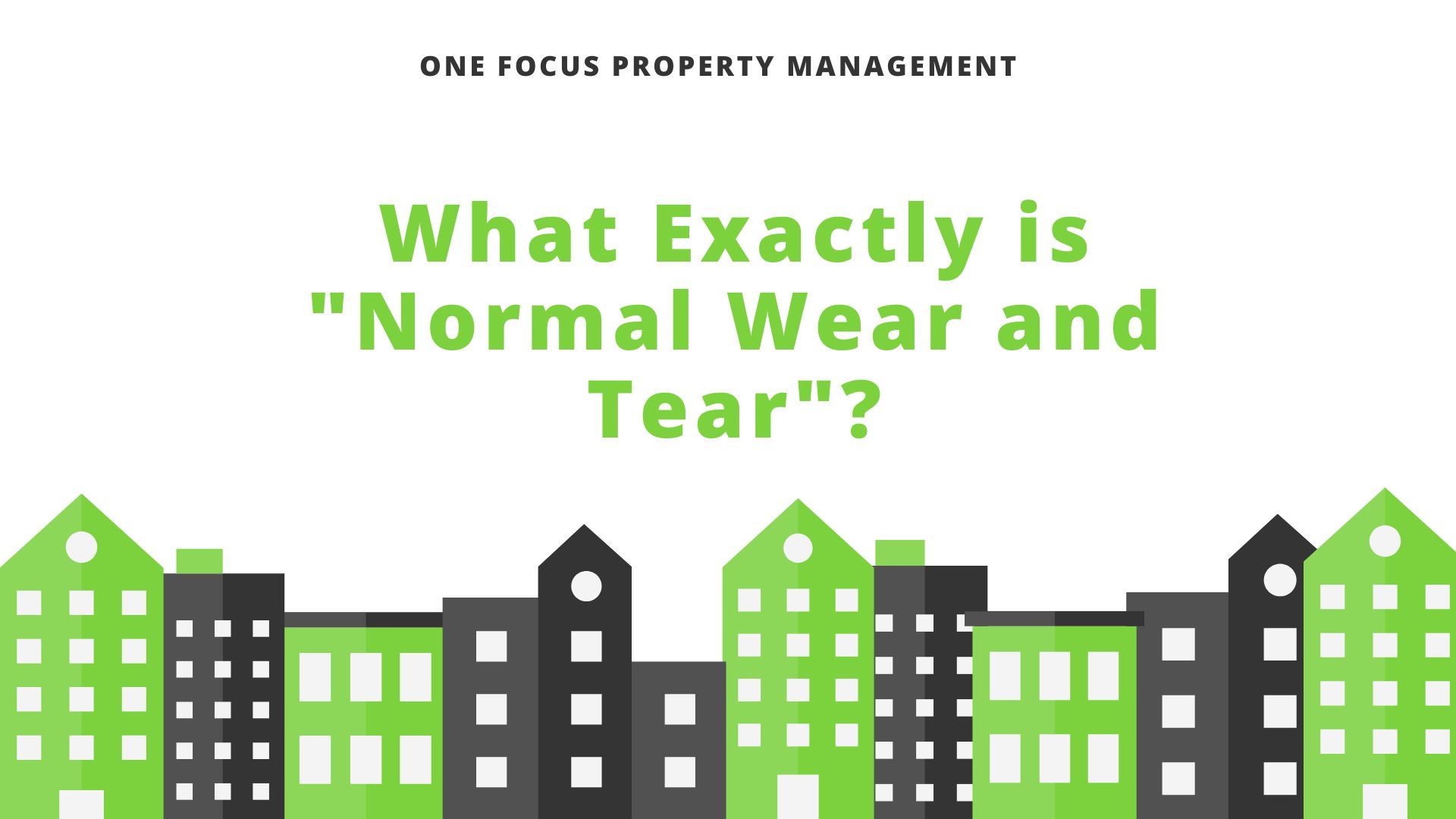As homeowners and renters, it's important to understand what constitutes normal wear and tear to avoid disputes over damages when moving out of a property.
In this blog, we will define and explain the concept of normal wear and tear, provide examples, and discuss how it differs from damages caused by neglect or abuse.
What is Considered “Wear And Tear”?
"Wear and tear" refers to the gradual deterioration of a property or item due to its normal use over time. It is a natural process that occurs due to regular usage and is not caused by any specific event or incident.
This type of damage is generally considered acceptable and is not the responsibility of the tenant or homeowner.
Examples of Normal Wear and Tear
Examples of normal wear and tear include:
Fading of paint or wallpaper due to sunlight
Scratches on hardwood floors from foot traffic
Worn carpets or rugs
Minor cracks in tile or linoleum
Loose door handles or cabinet knobs
Minor leaks in faucets or toilets
It is important to note that the definition of "normal wear and tear" can vary depending on the context and the specific item or property in question. It is generally based on how long the item or property has been in use, the type of use it has been subjected to, and what is reasonable to expect given those factors.

It is important to differentiate "normal wear and tear" from damages caused by neglect or abuse. Neglect refers to a failure to maintain an item or property properly, and abuse refers to intentionally causing damage. These types of damage are not considered normal wear and tear and may be the responsibility of the tenant or homeowner.
What is Considered Unexpected Damage?
Unexpected damage is not caused by normal wear and tear but is caused by specific incidents or events. These damages are not considered a normal aging process and are typically not covered under normal wear and tear.
Examples Of Unexpected Damage
Examples of unexpected damages include:
Water damage caused by a burst pipe or leaky roof
Fire damage caused by an electrical malfunction or arson
Damage caused by natural disasters such as floods, tornadoes, or earthquakes
Damage caused by vandalism or break-ins
Damage caused by pets, such as scratches on hardwood floors or holes in walls
Damage caused by moving heavy furniture or equipment
Damage caused by neglect or abuse, such as mold growth caused by lack of proper ventilation or broken windows caused by throwing objects
It's important to note that unexpected damages can occur even when the property is well maintained and taken care of, and it's not always the fault of the tenant or homeowner. In these cases, the property owner or landlord may have insurance to cover the damages, or the tenant may have renter's insurance that covers those damages or any new renovations.
.jpg)
In general, the distinction between normal wear and tear and unexpected damage is important, as it can have legal and financial implications for homeowners and renters. It is essential to document any damages and take pictures before moving out so that it is clear what is normal wear and tear and what is unexpected damage.
When Can Landlords Pull From Security Deposits?
Here are some basic ways, a landlord can pull from security deposits:
To Cover Damages Caused By The Tenant
Landlords are legally entitled to use a tenant's security deposit to cover any damages caused by the tenant during their tenancy as long as the damages are beyond normal wear and tear. This includes damages caused by pets, smoking, or intentional destruction of property. Landlords must provide a detailed list of damages and the cost of repairs, with receipts or invoices as proof.
To Cover Unpaid Rent or Other Fees
If tenants move out before their lease ends, landlords may use the security deposit to cover unpaid rent or other fees such as late fees or cleaning costs. The landlord must provide an itemized list of charges and the amount of money withheld from the security deposit.
To Cover Unpaid Utility Bills
Landlords may also use the security deposit to cover any unpaid utility bills the tenant may have left behind. This is particularly relevant if the utility bills are in the tenant's name and should be specified in the lease agreement.
It's important to note that landlords can only use a security deposit for the reasons specified in the lease agreement. They must return the deposit to the tenant within a certain timeframe, usually 30 days after the tenant moves out.

If the landlord fails to return the deposit or uses it for unallowable reasons, the tenant may be able to take legal action.
Tracking Damage with Before and After Photos
Tracking damage with before and after photos is an effective way to document the condition of a property before and after a tenant moves in or out.
By taking detailed photos of the property, landlords and tenants can have a clear and accurate record of the property's condition, which can determine whether any damages result from normal wear and tear or if the tenant caused them.
Here are some tips for tracking damage with before and after photos:
Take Detailed Photos of The Entire Property
Before a tenant moves in, take detailed photos of the entire property, including the exterior, interior, and all individual rooms. Take photos of the walls, floors, ceilings, windows, doors, appliances, fixtures, and furnishings. Make sure to include close-up shots of any existing damages or wear and tear.
Take Photos at Move-Out
When a tenant moves out, take another set of photos of the entire property. Compare the before and after photos to determine if any new damages have occurred, and document any damages during the tenant's tenancy.
Use a Date Stamp
It's important to use a date stamp on the photos to provide clear evidence of when the photos were taken. This will help prevent any disputes over the timing of the damages.
Keep the Photos in a Safe Place
Keep the before and after photos in a safe place, such as cloud storage or a physical file, so they can be easily accessed.
Use It as Evidence
If a dispute arises over the property's condition, the before and after photos can support either the landlord or tenant's claim. They can also determine the cost of repairs or the amount to be withheld from a security deposit.

By following these tips, landlords and tenants can ensure that they have a clear and accurate record of the property's condition, which can be used to fairly determine the responsibility for any damages or wear and tear that occurs during the tenancy.
Bottom Line
"Normal wear and tear" refers to the gradual deterioration of a property or item due to its normal use over time. It is considered acceptable and is not the responsibility of the tenant or homeowner.
"Unexpected damage" refers to damages caused by specific incidents or events that are not considered normal and typically not covered. Landlords are legally entitled to use a tenant's security deposit to cover damages caused by the tenant, unpaid rent or other fees, and unpaid utility bills.
It's important to document damages with before and after photos and to differentiate between normal wear and tear and unexpected damage to avoid disputes when moving out of a property. Get in touch with One Focus Property Management today and let us help you get the most out of your rental investment!



